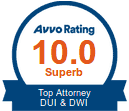HORIZONTAL GAZE NYSTAGMUS AS FIELD SOBRIETY EVIDENCE IN SOUTH CAROLINA DUI: AN OLD ISSUE IN NEED OF A NEW LOOK
Robert M. Sutton
Sutton Law Firm, PC
www.myrtlebeachduilawyer.com
PO Box 2910
Myrtle Beach, SC 29578
By Robert M. Sutton, Attorney at Law
In the leading case of State v. Sullivan, 426 S.E.2d 766 (1993), the South Carolina Supreme Court dealt for the first time with the issue of the admissibility of Horizontal Gaze Nystagmus (HGN) field sobriety test evidence in DUI trials. The court held that HGN evidence was admissible in DUI trials when used to elicit "objective manifestations of soberness or insobriety", but did not address what, if any, specific foundational requirements must be met before the admission of such evidence. At the time of the Sullivan decision, relatively few states had yet confronted the admissibility of HGN evidence. Approximately forty states have now ruled on the admissibility of HGN evidence and discussed the requirements for its admission. Thirty states have ruled on the issue since 1993.1 The vast majority of states now hold that (1) HGN evidence is scientific in nature; (2) HGN evidence requires expert testimony under Rule 702 for its admission; and (3) that a specific foundation must be laid before such evidence is admitted demonstrating that the "test" was properly administered and interpreted by an officer trained in the proper procedures. Further, South Carolina adopted rules of evidence in 1995 based on the federal rules which would now seem to indicate that HGN evidence must be admitted by expert testimony pursuant to South Carolina Rules of Evidence 702. In light of the developments in this area of law and the adoption of the rules of evidence, the time is currently ripe for the courts of this state to revisit and review the foundational standards for admissibility of HGN evidence and to review whether such evidence must be admitted by expert testimony.
This article will discuss the underpinnings of the Sullivan holding, a brief background of the development of HGN and other standardized field sobriety "tests", their acceptance in South Carolina, the importance of proper training to the administration and interpretation of "test" results, the need for a more stringent foundational standard for admissibility and why the South Carolina Rules of Evidence ("SCRE") require HGN evidence testimony to be presented by an expert witness rather than a lay witness.
A. What is Horizontal Gaze Nystagmus and why is it used as a field sobriety exercise?
Horizontal Gaze Nystagmus is the "involuntary jerking of the eyes occurring as the eyes gaze to the side". Horn, WL Op. at p.3. It is naturally occurring and is present in everyone to some degree. There are many different types of nystagmus but the type we are concerned with is HGN. Alcohol does not cause nystagmus, it only exaggerates or magnifies it by acting as a depressant on the Central Nervous System. See, e.g., Horn, Id. However, alcohol is only but one of approximately 38 known aggravating causes of HGN. Id.; and, Mark A. Rouleau, Unreliability of the Horizontal Gaze Nystagmus Test, 4 AM JUR Proof of Facts 3d 439 (1989) at §9. These other aggravating causes include medical conditions such as glaucoma, strep, and influenza, common medications such as antihistamines and aspirin, and even heavy consumption of caffeine and nicotine. Nystagmus can even be caused by simple eye muscle fatigue, as when watching a tennis game. See State v. Merritt, 647 A.2d 1021 (Conn. App. 1994) citing 3 J. Schmidt, Attorneys Dictionary of Medicine (1993). Therefore, the mere observation of nystagmus is not necessarily meaningful without knowing more about the persons medical history, current medications, and habits. Further, at least one study observed that even in cases where alcohol was the initial aggravating cause of the nystagmus, nystagmus can remain for hours after the alcohol had been eliminated from a persons system. See Unreliability of the Horizontal Gaze Nystagmus Test, Id., at §7. Another study alleges that 50 to 60 % of persons will exhibit HGN indistinguishable from that caused by alcohol impairment if they "deviate their eyes more than 40% to the side". Id. Nonetheless, the National Highway Traffic Safety Administration ("NHTSA") maintains that HGN is the most reliable field tool for predicting impairment in drivers.2
Notwithstanding the dispute over the use of HGN as an indicator of impairment, the basic theory behind it is that an impaired person should exhibit distinct eye nystagmus when the eye is held at maximum deviation to the side and that the onset of nystagmus will occur prior to the eye reaching a point of deviation forty five degrees from center ( "the angle of onset").3
B. State v. Nagel: The authority underpinning Sullivan
The Sullivan court, having precious little authority from other jurisdictions to rely on, cited the Ohio case of State v. Nagel, 506 NE.2d 285 (1986), as authority for its holding. The Nagel opinion appears to be the first appellate court decision in the country discussing the admissibility of HGN evidence following the publication of NHTSA's field evaluation of the validity of "standardized field sobriety tests" ("SFST's") , which include the HGN "test". However, Nagel was flawed in several important respects. First, the decision is notable for its brevity rather than its thorough legal analysis. Further, it asserted that HGN evidence is "objective in nature" and does not require expert interpretation, assertions which the majority of states that now allow HGN evidence disagree with. Relying on Nagel, the Sullivan court held that HGN evidence is no different from that of other field sobriety tests, and therefore a lay witness could testify as to "objective manifestations" of impairment observed in response to HGN "testing".4 However, close examination reveals that the manifestations observed through HGN "testing" are subjective and not objective in nature. This point was recognized by the District Court in the Horn opinion when it noted that with respect to the HGN test, "much depends upon the investigating officer properly performing the test procedures and his subjective evaluation (emphasis added) of the presence of standardized clues". Horn, WL Op. at p.3.5
Three examples will demonstrate how the HGN test as administered in the field requires subjective determinations by the examiner to conclude that a person is impaired, rather than merely noting "objective manifestations". First, one of the signs the examiner is taught to look for is "distinct nystagmus". However, everyone has some level of nystagmus naturally and many things other than alcohol can cause aggravated nystagmus. Therefore, in making a determination as to whether the nystagmus was "merely present" (or naturally occurring), as opposed to "distinct", requires a subjective judgement by the examiner. Second, accurately observing and stating the angle of onset of the nystagmus is a critical determination essential to the validity of the test. See, South Carolina Criminal Justice Academy ("SCCJA"), Student Manual, Standardized Field Sobriety Testing Advanced DUI Detection, Page VIII-16 ("Because the 45 degree angle is a key factor in assessing a suspect's [level of impairment] it is important to know how to estimate that angle (emphasis added)). However, precise measurement of a 45 degree angle is not possible in a field environment. At best, the officer must estimate the angle of onset of nystagmus, another subjective determination. Third, even if the officer observes distinct nystagmus, he can only make a subjective determination as to its cause without knowing more about the persons medical history, current medications, and habits for reasons previously mentioned. Based on these examples, the HGN "test" cannot accurately be described as an objective test because its administration and interpretation rely on the examiner's subjective opinion in several critical aspects of the test, including whether nystagmus is present, if so, to what degree, its angle of onset, and whether its presence is indicative of impairment rather than some other condition.6 Therefore, the conclusion that HGN "testing" merely produces "objective manifestations" of impairment, like other field sobriety tests, should be reconsidered.
C. How HGN Came to Be Widely Used as a "Field Sobriety Test", and its Validation and Limitations as a Test
A brief history of the development of HGN as a field sobriety exercise is necessary here. In the 1970's NHTSA commissioned studies to develop and validate the reliability of a set of exercises that could assist police officers in the field to make accurate probable cause determinations in DUI cases. One of these exercises was the HGN "test".7 NHTSA developed specific procedures for administering and evaluating these exercises and in 1983, sought to demonstrate the validity and reliability of the exercises by subjecting them to testing in both controlled and field environments.8 As a result, NHTSA concluded that when these three particular exercises were administered as a group and evaluated according to specific procedures, they were a valid and reliable indicator of impairment. They are now referred to by NHTSA as "Standardized Field Sobriety Tests" or "SFST's" . See NHTSA, DOT HS-806-475, Field Evaluation of Behavioral Battery Test for DWI (1983); and NHTSA, DOT HS-806-512, Improved Sobriety Testing (1984).9 It should be noted that NHTSA's findings concerning validity and reliability of the SFST's is not a settled question. Young v. City of Brookhaven, 693 So. 2d 1355 (Miss. 1997)(HGN is a scientific test not generally accepted within the scientific community and thus inadmissible before a jury); and State v. Witte, 836 P.2d 1110 (Kan. 1992)(the reliability of the HGN test is not a settled proposition within the scientific community). The validity and reliability of the SFST's has also been subject to much academic debate . See, e.g., Cole, S., Ph. D. & Nowaczyk, R., "Field Sobriety Tests: Are They Designed for Failure?" (1994); Cole, S., Ph.D., & Nowaczyk, R., "Separating Myth from Fact: A Review of Research on the Field Sobriety Tests" (1994).10
Subsequent to its findings, NHTSA prepared instructor and student manuals for the purpose of training law enforcement personnel in the proper administration and interpretation of the SFST's. See, e.g., NHTSA, DWI Detection and Standardized Field Sobriety Testing (1992). These procedures for administering and interpreting the HGN "test" have been adopted by law enforcement agencies across the nation, to include our own. Although the HGN "test" is not presently taught as part of the curriculum in the SCCJA Basic Law Enforcement Officer's Training Course, it is taught at the academy in a three day advanced course entitled "Standardized Field Sobriety Testing Advanced DUI Detection". The materials in the student manual for the advanced course are adopted from the NHTSA manuals and follow "in detail" NHTSA procedures for administering and interpreting the SFST's, including the HGN "test". Thus, it is beyond dispute that the SCCJA, the agency responsible for the training of our police officers, is aware of and abides by the NHTSA standards and procedures for administering and interpreting the HGN "test". The advanced course student manual goes on to repeat in bold, capital letters an admonishment found in the NHTSA manuals concerning the validity of the SFST's:
THE VALIDATION APPLIES ONLY WHEN THE TESTS ARE ADMINISTERED IN THE PRESCRIBED STANDARDIZED MANNER; AND ONLY WHEN THE STANDARDIZED CLUES ARE USED TO ASSESS THE SUSPECTS PERFORMANCE; AND, ONLY WHEN THE STANDARDIZED CRITERIA ARE EMPLOYED TO INTERPRET THAT PERFORMANCE.
IF ANY ONE OF THE STANDARDIZED FIELD SOBRIETY TEST ELEMENTS IS CHANGED, THE VALIDITY IS COMPROMISED (emphasis added).
Quite clearly then, the NHTSA standards are the "Gold Standard" for the proper administration and interpretation of field sobriety tests and the SCCJA recognizes this.
D. Proper Training in the Administration and Interpretation of HGN "Test" is Key
The preceding admonition makes it clear that the HGN as a field sobriety "test" is only valid when administered and interpreted according to the NHTSA standardized criteria and if any test element is changed, its validity is compromised. However, despite the fact that proper training is critical to the validity of HGN "test"evidence, officers who receive basic law enforcement training at the SCCJA receive no training on the HGN "test".11 We must seriously question how these police officer's can testify in the courts of this state as to the administration and interpretation of HGN "test" results and relate those findings to a conclusion of impairment. Of what validity is the testimony of an officer that he has performed the test "in the field" a large number of times if it has been improperly administered or interpreted each time? One study has observed that the HGN "test" was incorrectly administered ninety percent of the time in a field environment. Booker, End-position Nystagmus as an Indicator of Ethanol Intoxication, 41 Science &Justice 113 (2001). Is HGN testimony any more reliable because an officer says he learned how to administer the test from a more senior officer if we do not know the more senior officer's training, experience, and qualifications to give instruction in proper "test" procedures?12 Isn't that a bit like a person graduating from dental school without ever having pulled a tooth or done a root canal, but they were told how to do it by a more senior dentist who may have let him observe the procedure? It is doubtful anyone would rely on this person's "training" to let him pull a tooth for them.
Because proper training in administering and interpreting HGN "test" results is critical to "test" validity, it is essential that our State adopt a meaningful foundational standard for admissibility of HGN evidence, to ensure that the HGN evidence presented to the jury is probative and reliable.
E. A Meaningful Foundational Standard for Admissibility
At present, South Carolina has one of the weakest, and apparently inconsistent, standards for the admissibility of HGN evidence in the country. In Sullivan, the court concluded that lay testimony by a State Trooper concerning administration and interpretation of an HGN "test" was admissible because he had received 20 hours of training in HGN testing at DUI detection school. In State v. Clute, 480 SE.2d 85 (Ct. App. 1996), the court upheld the trial court's ruling that a city police officer was qualified to give expert testimony concerning the HGN "test" because he had received 16 hours of training in HGN "testing".13 In Clute , the defendant also argued that the HGN testimony should not have been allowed because the officer failed to give the test according to a procedure described in Sullivan.14 However, the Court of Appeals dismissed this argument noting that the brief description concerning the administration of the HGN "test" found in Sullivan had questionable precedential value because it was contained in a footnote and the Sullivan court made no comment as to the correctness of the procedure. Subsequently, in the unpublished opinion of State v. Price, 97-UP-145 (Ct. App. 1997) the Court of Appeals reiterated that Sullivan neither established the only manner for performing the test nor did it hold that the failure to perform the test in a prescribed manner invalidates the test for evidentiary purposes. The court further stated that incorrect performance of the test goes only to the weight to be given the evidence, not its admissibility.
By acknowledging and adopting the NHTSA standards, as has already been done by the SCCJA, our courts could easily clarify what the proper and accepted method is for administering and interpreting the HGN "test". This would resolve the problem of widely varying descriptions of "test" procedures and observations based on them. It would also ensure that the HGN evidence presented in court is valid and therefore reliable. However, for the NHTSA standards to have any meaning, the courts must ensure that before HGN evidence is admitted a foundation is laid demonstrating that the officer was properly trained and that he administered and interpreted the "test" in accordance with that training. This would align South Carolina with the majority of other jurisdictions holding that proper administration goes to admissibility of HGN evidence , rather than its weight. See e.g., Duffy v. Dir. of Revenue, 966 SW.2d 372 (MO. Ct. App. 1998)(HGN result should not have been admitted because officer not aware how to properly administer and interpret "test" results); Hulse v. State, 961 P.2d 75 (Mont. 1998)(proper foundation must be laid before admission of HGN evidence showing officer properly trained to administer the test and gave it in accordance with training; can only correlate alcohol consumption to impairment if further foundation laid that he has special training in underlying scientific basis of HGN test); State v. Meador, 674 So.2d 826 (Fla. Dist. Ct. App) and Williams v. State, 710 So.2d 24 (Fla. Dist. Ct. App. 1998)(proper foundation must be laid that test was given by a qualified Drug Recognition Expert); State v. O'Key, 889 P.2d 663 (OR 1995)(Admissibility of HGN subject to foundational showing that officer was properly qualified, administered the test properly, and recorded the results accurately); Emerson v. State, 880 SW.2d 759 (Tex. Crim. App. 1994)(officer must qualify as an expert on HGN test, specifically on its administration and technique before testifying about suspect's performance); State v. City Court of City of Mesa, 799 P.2d 855 (AZ 1990)(foundation includes description of officer's training, experience, education, and experience in giving the test and a showing test was properly administered). A total of twenty nine jurisdictions admitting HGN evidence (eight others do not admit HGN testimony) require a foundation for admissibility and typically require a showing of the officer's training and experience, the fact that he was properly trained in how to administer and interpret the results, and that he did in fact give the "test" in question in accord with proper procedures. Only then can it be assured that the HGN evidence heard by the jury is reliable and therefore probative on the issue of impairment.
F. The Requirement that HGN Testimony be Presented as Expert Testimony Pursuant to the S.C. Rules of Evidence
Finally, our courts should consider the effect of the adoption of the South Carolina Rules of Evidence (SCRE) in 1995, two years after the Sullivan decision, on the admissibility of HGN evidence. Specifically, whether SCRE 701 and 702 require that HGN evidence be presented by expert testimony.
The SCRE set forth the rules concerning what testimony may be given by a lay witness (Rule 701) and by an expert witness (Rule 702). The rules are fairly straightforward. Under SCRE 701, a lay witness may give an opinion which is (a) rationally based on his own perception; (b) is helpful to determining a fact in issue or to a clear understanding of the witnesses testimony; and (c) does not require special knowledge, skill, experience, or training. Prior to the adoption of the SCRE, our Supreme Court stated that the test for whether testimony subject matter is outside the province of a lay witness and required expert testimony was whether a topic was not a matter within the common knowledge and experience of most lay persons. State v. Myers, 391 SE.2d 551 (1990). This opinion is still fairly consistent with the current rules of evidence as modified by the addition of subsection (c).
With this in mind, let's start our analysis of whether HGN testimony is properly a subject for lay or expert testimony by answering a few simple, common sense, questions relating to evidence of alcohol impairment. First, is it within the common knowledge, experience, and understanding of the average person that if someone has had too much to drink (ie, is intoxicated) they might stagger, or be unsteady on their feet? Yes. Therefore an observation of staggering or unsteadiness may clearly be related at trial by a lay witness. Second, is it within the common knowledge, experience, and understanding of the average person that if someone has had too much to drink they may have slurred speech? Yes. Therefore an observation of slurred speech may clearly be related at trial by a lay witness. Third, is it within the common knowledge, experience, and understanding of the average person that if a person has had too much to drink they may exhibit a distinct, involuntary jerking of the eyeball at a certain deviation of the eye from center? Of course not! Is it within the common knowledge, experience, and understanding of the average person that there are many types of nystagmus, that there are at least 38 aggravating causes of nystagmus, or that everyone exhibits some degree of nystagmus naturally and that alcohol may enhance the effect by acting as a depressant on the central nervous system? Of course not. How many people on the typical jury panel have ever heard of nystagmus or the concept of nystagmus, or even heard of the word nystagmus? Few if any. Nystagmus evidence infringes upon the realms of ophthalmology and physiology and requires an understanding of processes beyond the common knowledge and understanding of the average person. In order for the administration and interpretation of the HGN "test" and the principles which correlate its presence to impairment to make sense to the average person HGN evidence requires reference to specialized knowledge and training. Testimony as to an observation of the "eyeball jerking", without reference to underlying scientific principles, is neither meaningful nor probative of anything. This makes it quite different from testimony concerning other common field sobriety exercises such as walking a line, standing on one leg, counting, or saying the "ABC's" in which the officer merely states his objective observation of commonly understood physical and verbal manifestations of impairment such as lack of balance, poor coordination, and slurred speech.15
When applying the SCRE, it can be seen that testimony relating to a technical concept like nystagmus is not a proper subject for lay testimony, but rather is "specialized knowledge" which will assist the trier of fact to determine a fact in issue (i.e, impairment).16 South Carolina courts have considered expert testimony in cases such as those involving principles of medicine, engineering, and auto mechanics, among many other fields. These fields all require special knowledge, skill, experience and training, as does understanding the underlying principles of HGN and the correct techniques to be used in properly administering and interpreting HGN "tests".
Many states agree that HGN testimony is not a proper subject for lay testimony but can only be introduced through qualified expert testimony.17 See, Horn, WL Op. At P. 19 (without being qualified as expert under Rule 702 officer cannot testify to causal nexus between alcohol consumption and nystagmus or about accuracy rate of HGN "test"). See also, State v. Torres, 976 P.2d 20 (NM 1999)(HGN testimony is beyond the common and general knowledge; expert testimony required; court declined to take judicial notice of HGN reliability); State v. Merritt, 647 A.2d 1021 (Conn App 1994)(The mechanics of the HGN test, unlike other field sobriety tests, are not within the common knowledge of lay jurors); and People v. Vega, 496 NE.2d 501 at 504-05 (Ill. 1986)(HGN evidence inadmissable because it was beyond the general knowledge of average lay person and no expert testimony was offered). Even our northern neighbor, North Carolina, to whose decisions our appellate courts often look to for guidance, would require expert testimony for the admission of HGN evidence. State v. Helms, 504 SE.2d 293 (NC 1998)(HGN does not measure behavior a lay person would commonly associate with intoxication but rather represents testimony that must be presented to a jury by a qualified expert). Further, and perhaps most important to this discussion, the Note to SCRE 701 indicates that the language of subsection (c) of Rule 701 (lay testimony must not require special knowledge, skill, experience or training to understand) is based on the Rules of Evidence of Florida and Tennessee. Both Tennessee and Florida require that HGN evidence be presented by expert testimony pursuant to Rule 702. See State v. Murphy, 953 SW.2d 200 (Tenn. 1997)(although officer in the case had attended training in DUI offender apprehension training and on the HGN test, this training alone was insufficient to qualify him as an expert on HGN pursuant to Rule 702); State v. Meador, 674 So.2d 826 (Fla. Dist. Ct. App) and Williams v. State, 710 So.2d 24 (Fla. Dist Ct. App. 1998)(HGN testimony requires particular expertise outside the realm of average person's common knowledge and therefore a foundation must be laid that it was correctly administered by a qualified drug detection expert).
When considering the impact of the SCRE and authority from other jurisdictions with similar rules of evidence to our own, it seems apparent that expert testimony pursuant to SCRE 702 is necessary for the admission of HGN evidence at trial.
Summary
In light of our adoption of the SCRE and a substantial body of law that has developed throughout the country concerning the admissibility of HGN testimony since the time of our Supreme Court's holding in State v. Sullivan, our courts should give the issue of the admissibility of HGN evidence a new look. In doing so, they should consider the need for a more stringent foundation before HGN evidence can be admitted in DUI trials, such as requiring the officer to show that he had the necessary training and experience to properly administer and interpret the test according to NHTSA standards, that he administered and interpreted the test in accordance with those standards, and can demonstrate the proper procedures in court. Further, the courts should consider the impact of the SCRE on HGN evidence and adopt the position held by a majority of states which now require expert testimony to relate an observation of nystagmus to impairment.
ABOUT THE AUTHOR
Robert Sutton is principal of the Sutton law Firm, PC, in Myrtle Beach. His practice focuses on DUI, Criminal, and Personal Injury cases. He is a Sustaining Member and current officer of the S.C. Association of Criminal Defense Lawyers, and a Graduate of the National College of DUI Defense (2001 Summer Session). He is a 1985 Graduate of The Citadel and a 1993 Graduate of the University of South Carolina School of Law.








